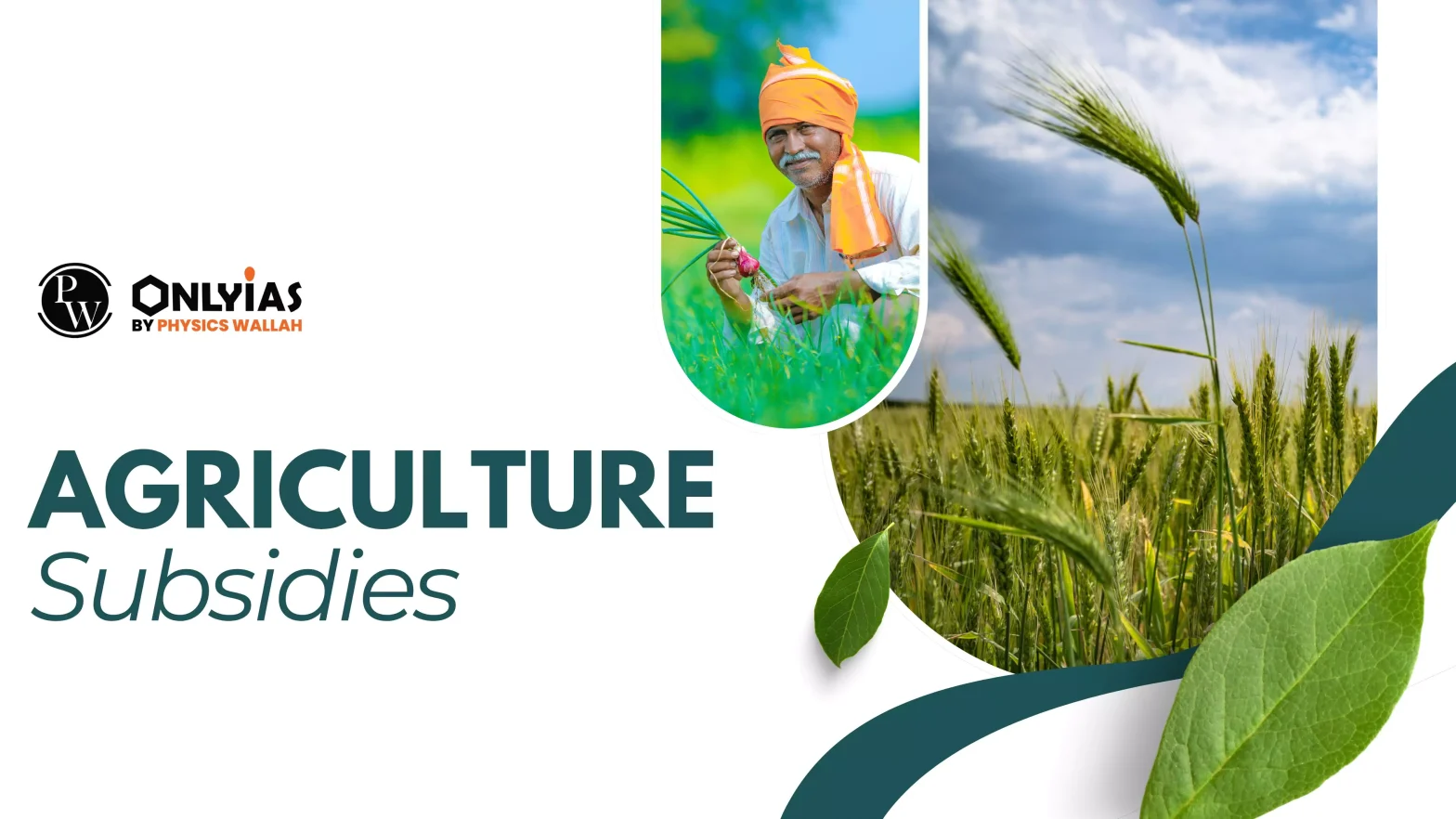A significant portion of India’s agriculture budget, approximately 73%, is allocated towards welfare schemes and subsidies, according to a report by the Indian Council for Research on International Economic Relations (ICRIER).
| Relevancy for Prelims: Bengal famine of 1943, PL480 agreement, minimum support price, high-yielding varieties, NPK ratio, etc.
Relevancy for Mains: Role of agricultural subsidies in India’s food security, Concerns associated with agricultural subsidies, etc. |
Rise of Agriculture Subsidies in India
- 1943: Bengal famine of 1943: “Bengal famine of 1943, famine that affected Bengal in British India in 1943. It resulted in the deaths of some 38 lakh people due to malnutrition or disease.”
- 1947: India’s First Independence Day August 15, 1947.
- 1954: Programme of food aid to india in 1954 under title I of the II, s. government agricultural trade development assistance (public law 480), five agreements have been signed between the United States government and the Governmen of India.
- In 1954, India signed the PL480 agreement with the US, allowing India to import wheat from the US whose quality was such that it could not even be fed to a pig.
- 1959: In late january 1959, a 13-member ford foundation-sponsored agricultural production team from the US spent over two months in India, travelling to different states meeting people on the ground and “officers at all levels from gram sevak to chief minister“. Their mission: to study india’s food production problems.
- That report, titled ‘India’s Food Crisis And Steps To Meet It’, contained the germ of a policy idea much in the news now: minimum support price (msp) for crops. The report listed three “specific assurances” to be given to cultivators:
- 1960: Green Revolution: International agricultural research centers developed and adopted high-yielding varieties (HYVs) of food crops like wheat, rice, and maize.
- 1972: Punjab contributed around 70% in India’s total food grain production.
- 2023-24: India’s farm exports to exceed US Dollar 53 Billion in 2023-24. India is the world’s second-largest producer of wheat, rice and sugar, but had clamped curbs on the export of these commodities to increase domestic availability to rein in rising prices.
Enroll now for UPSC Online Course
Agricultural Subsidy
- Agricultural subsidies are financial incentives or monetary payments that governments provide to farmers and agricultural producers to support their operations.
- Types:
-
- Fertiliser Subsidy.
- Water Subsidy.
- Power Subsidy.
- Minimum Support Price.
- Credit Subsidy.
- Irrigation Subsidy.
- Genesis: To improve food grains production in India, subsidy was initially provided for purchase of high quality seeds and fertilisers.
- Extension: Now includes subsidies for electricity, irrigation, diesel, crop insurance, etc.
- Expenditure: The indian government is spending a total of Rs 5 lakh crore every year on agriculture subsidy.
Major Challenges Associated with Agricultural Subsidies
- Increases Fiscal Deficit: Agricultural subsidies has a substantial impact on the fiscal deficit. The 3-Fs, known as food, fertilizer and fuel subsidy, constitute 95% of the total subsidy.
- Fertiliser Misues: At Rs 2.55 lakh crore, India’s fertilizer subsidy bill overshoots even revised estimate.
- As per a NITI Aayog report, India’s average NPK ratio in 2015-16 was 8:3:1, a considerable departure from the suggested 4:2:1 ratio.
- Overuse of Nitrogen-Based Fertilizers: India ranks as the third-largest producer and second-largest consumer of urea, a nitrogen-based fertilizer leading to soil acidification.
- Misuse of urea is also increasing cancer burden of India.
- Power Subsidy: Punjab sounds alarm as water table recedes fast in 109 administrative blocks. 30% wells registered decline in groundwater level.
- In the case of Punjab, which tops the list, the extraction of groundwater is 164%. In Sangrur and Malerkotla, the withdrawal of groundwater is more than three times of what is recharged. The data show that in Rajasthan, the extraction of groundwater is at 148% and in Haryana, this stood at 136%.
- Minimum Support Price: A government scheme that sets a minimum price for certain crops that farmers can sell their produce at during the kharif and rabi seasons.
- World Trade Organisation meet in Thailand targeted India’s MSP alleging that India is dumping its excess food grains in the international market.
- Farmer in India demands legal guarantees for MSP, which is not feasible for government.
- Further, MSP has lead to promotion of monocropping which is the practice of growing a single crop. This has lead to significant soil degradation, further leading to decline in productivity.
Check Out UPSC CSE Books From PW Store
Way Forward
- Elimination of Agricultural Subsidies in Not A Solution: According to NABARD, average amount of outstanding debt (AOD) for indebted agricultural households is 1,04,602.
- Overall suicide rate in 2022 up by around 4%: As many as 154 farmers and daily-wage labourers die by suicide in India daily, mainly due to “family problems” and “illness”, said the latest National Crime Records Bureau (NCRB) 2022 annual report.
- Rationalising Agricultural Subsidies: Improve spending on agricultural research & development, technological upgradation, innovation, and infrastructure.
-
- India’s agricultural research and development (R&D) spending is around ₹8,000 crores whereas fertiliser spending on stands at around ₹2.5 lakh crore.
- Zimbabwe, Argentina, and other countries saw a collapse in their agricultural productivity due to irrational subsidies.
Conclusion
Optimizing agricultural subsidies while boosting R&D and sustainable practices can transform India’s agricultural sector, ensuring food security and economic stability for future generations.
![]() 10 Aug 2024
10 Aug 2024

